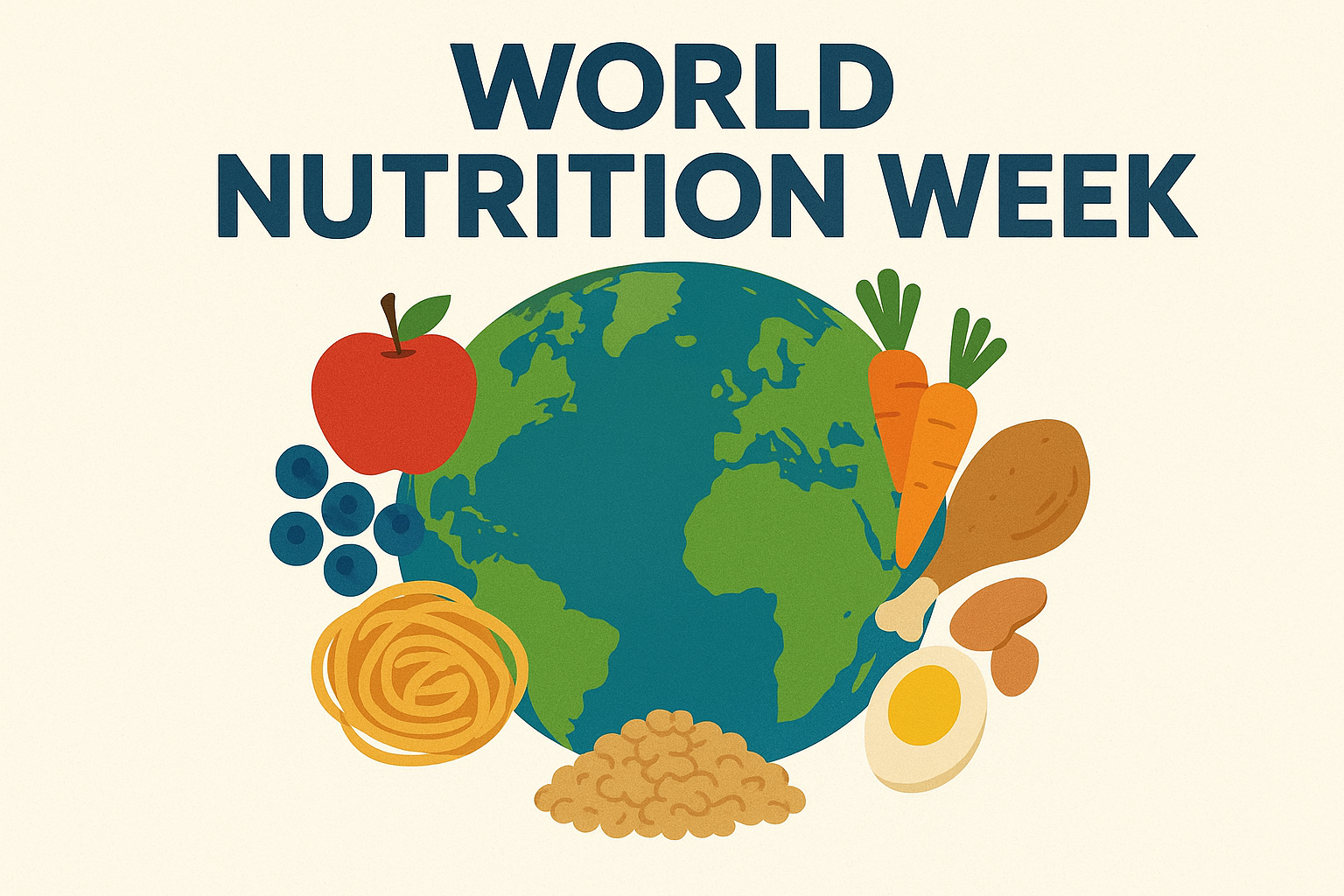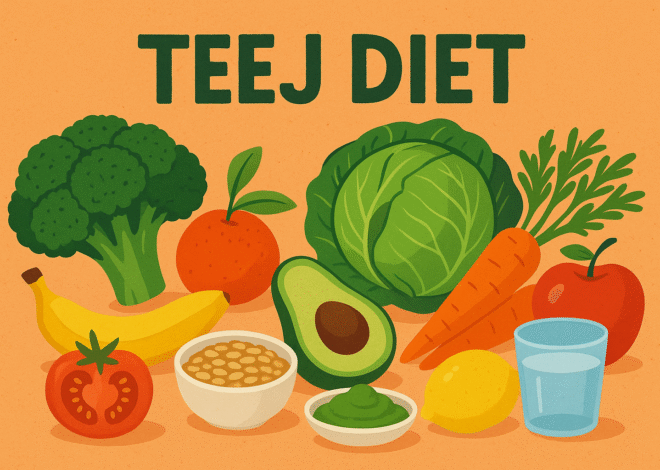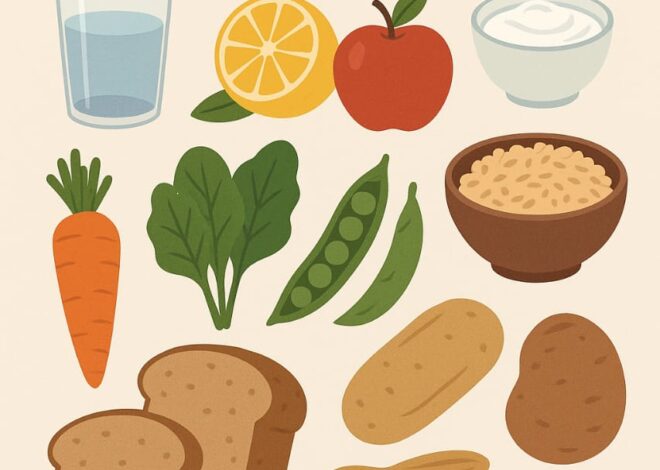
Unlocking the Secret: Can You Really Reverse Type 2 Diabetes?

Type 2 diabetes, once referred to as adult-onset or non-insulin-dependent diabetes, is a chronic condition where the body either doesn’t produce enough insulin or the cells become resistant to its effects. This leads to inadequate insulin levels, preventing glucose from being absorbed into the cells properly. As a result, glucose accumulates in the bloodstream, and the cells are deprived of energy, hindering their normal function.
Achieving Remission: Is It Possible?
There are several lifestyle changes and medical strategies that can support you in working toward remission.
Weight Management
Maintaining a healthy weight offers the best chance of reaching remission, as excess body fat impacts how your body produces and responds to insulin. Acting early after diagnosis is ideal, but even those who have lived with diabetes for over two decades have successfully entered remission.
For individuals with a high body mass index (BMI), shedding just 5% of their body weight can lead to:
- Better blood sugar control
- A lower risk of complications
- A reduced need for medications, if they’re being used
Weight loss is key in improving insulin sensitivity and supporting overall health outcomes.
Effective Ways to Manage Type 2 Diabetes
- Regularly monitor your blood sugar levels
- Achieve weight loss, if advised by your healthcare provider
- Follow a balanced, nutritious diet
- Incorporate regular exercise into your routine
- Use prescribed medications or insulin when necessary
Get Moving for Better Health
Starting an exercise routine is crucial for overall well-being and can help you lose weight, potentially reversing some diabetes symptoms. Work with your healthcare team to create a plan, and keep these tips in mind:
- Ease into it: If you’re new to exercise, set manageable goals, like taking short walks daily, then gradually increase the time and intensity.
- Pick up the pace: Fast walking is a simple yet effective way to exercise, requiring no equipment.
- Prevent blood sugar spikes: Aim to exercise at least once every 48 hours, and monitor your blood sugar before, during, and after workouts.
- Be prepared for drops: Keep a snack handy in case your blood sugar levels dip while exercising.
Revamp Your Diet

Following a nutrient-rich diet can play a key role in pushing type 2 diabetes into remission. It can also help you:
- Maintain a healthy weight
- Stay strong and agile
- Manage your symptoms effectively
- Enhance your overall physical health
- Alleviate depression and anxiety, which are often linked to diabetes
A diabetes-friendly diet should focus on:
- Consuming enough calories to achieve or maintain a healthy weight
- Incorporating healthy fats like omega-3s, known for their anti-inflammatory benefits
- Eating a variety of fresh or frozen fruits and vegetables for antioxidants
- Including whole grains
- Opting for lean proteins such as poultry, fish, low-fat dairy, soy, and beans
- Keeping alcohol consumption low or eliminating it entirely
- Limiting added sugars, unhealthy fats, and salt
Type 1 vs. Type 2 Diabetes
The pancreas produces a hormone called insulin, which helps regulate blood sugar (glucose) levels. When glucose levels rise, the pancreas releases insulin, prompting the glucose to move from the bloodstream into the cells for energy. As glucose levels drop, insulin production decreases.
Type 2 diabetes impacts how the body metabolizes sugar. In this case, the pancreas either doesn’t produce enough insulin, or the body becomes resistant to it, leading to hyperglycemia—a condition where glucose accumulates in the blood.
Type 1 diabetes is an autoimmune condition. The immune system mistakenly attacks healthy cells in the pancreas, preventing it from producing sufficient insulin. The exact cause is unclear, though genetics and family history are significant factors. Individuals with type 1 diabetes must regularly inject insulin since their bodies produce little to none.
While there is no cure for type 1 diabetes, it can be managed through medication. For type 2 diabetes, lifestyle changes such as reducing calorie intake, restricting carbohydrates, and in some cases, bariatric surgery can help manage and sometimes reverse the condition.
Symptoms of Diabetes
- Persistent thirst
- Frequent urination, especially at night
- Unexplained weight loss
- Blurred vision
- Tingling or numbness in the nerves
Borderline diabetes risk factors
Risk Factors for Prediabetes
You may have a higher risk of developing prediabetes if you have any of the following:
- Being overweight or obese
- Leading a physically inactive lifestyle
- Being 45 years old or older
- Having high blood pressure or elevated cholesterol
- Having a close relative with type 2 diabetes
- A personal history of heart disease, stroke, gestational diabetes, or polycystic ovary syndrome (PCOS)
Balanced Diet for Diabetes
Prioritize nutrient-rich foods like fruits, vegetables, lean proteins, and heart-healthy fats. When selecting grains, opt for complex carbohydrates such as whole grains.
It’s crucial to minimize your intake of added sugars, typically found in processed baked goods and sugar-sweetened beverages. These foods can spike blood sugar levels and often lack essential nutrients.
Creating Your Diabetes-Friendly Eating Plan
A diabetes diet is designed to regulate blood sugar by focusing on nutritious foods in moderate portions and maintaining consistent meal timings. This eating plan, rich in nutrients but low in fat and calories, emphasizes fruits, vegetables, and whole grains. It’s not only ideal for managing diabetes but also beneficial for overall health.
Why You Need a Healthy-Eating Plan
If you have diabetes or prediabetes, your healthcare provider might recommend consulting a dietitian to create a personalized eating plan. Such a plan helps control blood sugar levels, manage weight, and reduce the risk of complications like heart disease, high blood pressure, and high cholesterol.
Overeating carbohydrates and calories can lead to elevated blood sugar levels, causing hyperglycemia. If prolonged, this can result in serious health issues such as nerve, kidney, and heart damage. By making informed food choices and monitoring your eating habits, you can maintain your blood sugar within a safe range.
For individuals with type 2 diabetes, weight loss can make blood sugar management easier and offer additional health benefits. A structured, healthy-eating plan provides a safe, nutritious path to achieving weight loss goals.
Recommended Foods for Managing Diabetes
Maximize the nutritional value of your meals by choosing healthy carbohydrates, fiber-rich foods, fish, and “good” fats.
Healthy Carbohydrates
During digestion, both sugars (simple carbohydrates) and starches (complex carbohydrates) break down into blood glucose. Prioritize healthy carbohydrates like:
- Fruits
- Vegetables
- Whole grains
- Legumes (beans and peas)
- Low-fat dairy products (milk and cheese)
Limit Unhealthy Carbohydrates
Steer clear of less nutritious carbohydrates found in foods or beverages high in added fats, sugars, and sodium.
Incorporate Fiber-Rich Foods
Dietary fiber consists of the indigestible components of plant-based foods that your body cannot break down or absorb. It plays a crucial role in regulating digestion and managing blood sugar levels. Foods that are rich in fiber include:
- Vegetables
- Fruits
- Nuts
- Legumes (such as beans and peas)
- Whole grains
Heart-Healthy Fish
Incorporate heart-healthy fish into your diet at least twice a week. Options like salmon, mackerel, tuna, and sardines are abundant in omega-3 fatty acids, which may help protect against heart disease.
Be cautious with fried fish and those high in mercury, such as cod.
Beneficial Fats
Foods rich in monounsaturated and polyunsaturated fats can contribute to lowering cholesterol levels. Good sources include:
- Avocados
- Nuts
- Canola, olive, and peanut oils
Watch Your Fat Intake
Be mindful not to consume excessive amounts of fats, as they are calorie-dense.
Foods to Limit
Diabetes can increase your risk of heart disease and stroke by promoting the development of clogged and hardened arteries. To support a heart-healthy diet, avoid foods that contain the following:
- Saturated Fats: Steer clear of high-fat dairy products and animal proteins such as butter, beef, hot dogs, sausage, and bacon. Limit the intake of coconut and palm kernel oils.
- Trans Fats: Avoid trans fats, which are commonly found in processed snacks, baked goods, shortening, and stick margarine.
- Cholesterol: High-fat dairy products, fatty animal proteins, egg yolks, liver, and other organ meats are sources of cholesterol. Aim for a daily limit of no more than 200 milligrams (mg) of cholesterol.
- Sodium: Strive to keep sodium intake to no more than 2,300 mg per day. If you have high blood pressure, your healthcare provider may recommend a lower limit.
Creating a Nutritional Plan
There are various strategies you can adopt to establish a healthy diet that helps maintain your blood sugar levels within a normal range. Collaborating with a dietitian can help you determine which approach or combination of approaches is most effective for you. Here’s one popular method:
The Plate Method
This technique emphasizes increasing your vegetable intake. When preparing your meals, follow these guidelines:
- Vegetables: Make sure to fill half of your plate with non-starchy vegetables like spinach, carrots, and tomatoes.
- Lean Protein: Allocate a quarter of your plate to a lean protein source, like tuna, lean pork, or chicken.
- Carbohydrates: Reserve the remaining quarter for carbohydrates, such as brown rice or starchy vegetables like green peas.
- Healthy Fats: Incorporate small amounts of healthy fats, like nuts or avocados.
- Additional Items: Add a serving of fruit or low-fat dairy, and choose water or unsweetened tea or coffee as your beverage.
Understanding Carbohydrate Counting
Carbohydrates significantly influence your blood sugar levels since they break down into sugar. To effectively manage your blood sugar, you might need to learn how to calculate your carbohydrate intake, often with the guidance of a dietitian. This knowledge will also help you adjust your insulin dosage accordingly. It’s crucial to monitor the carbohydrate content of each meal and snack.
Choosing Your Foods
A dietitian can assist you in selecting specific foods to aid in meal and snack planning. You can choose from various foods organized into categories, such as carbohydrates, proteins, and fats.
Each serving within a category is referred to as a “choice.” A food choice contains a similar amount of carbohydrates, protein, fat, and calories, resulting in an equivalent effect on your blood sugar as any other food in that category. For instance, foods within the starch, fruit, and milk categories typically contain between 12 and 15 grams of carbohydrates.
Glycemic Index
Some individuals with diabetes utilize the glycemic index to choose their foods, particularly carbohydrates. This method ranks carbohydrate-containing foods according to their impact on blood sugar levels. Discuss with your dietitian whether this approach is suitable for you.
Sample Menu
When planning your meals, consider your size and activity level. Here’s an example menu for someone requiring 1,200 to 1,600 calories per day:
- Breakfast: One medium slice of whole-wheat bread with 2 teaspoons of jelly, ½ cup of shredded wheat cereal with 1 cup of 1% low-fat milk, a piece of fruit, and coffee.
- Lunch: A roasted vegetable sandwich with tomato and mayonnaise, a medium apple, and water.
- Dinner: Salmon cooked with 1½ teaspoons of vegetable oil, 1 teaspoon of margarine, ½ cup of carrots, ½ cup of green beans, a medium dinner roll, and unsweetened tea or coffee.
- Snack: For example, 2½ cups of popcorn topped with sprouts.
Results of a Healthy-Eating Plan
Adopting a healthy-eating plan is crucial for managing your blood sugar levels and preventing complications related to diabetes. You can also tailor this diet to align with your weight loss goals.
In addition to managing diabetes, a balanced diet offers several other benefits. Since this diet emphasizes generous portions of fruits, vegetables, and fiber, it can help reduce your risk of cardiovascular diseases and certain types of cancer. Moreover, consuming low-fat dairy products may decrease the risk of low bone mass in the future.
Green Leafy Vegetables to Include in Your Diet:
Incorporating green, leafy vegetables into your meals can provide essential nutrients and further contribute to overall health. Some great options include:
- Spinach
- Collard Greens
- Kale
- Cabbage
- Bok Choy
- Broccoli
Including a variety of these vegetables can enhance your diet’s nutritional value while supporting your diabetes management efforts.
Whole Grains and Their Benefits
Whole grains play a crucial role in a healthy diet, especially for people managing diabetes. They provide high levels of fiber and essential nutrients compared to refined white grains.
Importance of Fiber:
A fiber-rich diet is crucial for people with diabetes as it slows down the digestion process. This slower absorption of nutrients helps maintain stable blood sugar levels, which is vital for effective diabetes management.
Lower Glycemic Index (GI):
Whole grains typically have a lower glycemic index (GI) compared to refined grains like white bread and rice. Foods lower on the GI scale have a smaller impact on blood sugar levels.
Examples of Whole Grains to Add to Your Diet:
Incorporating a variety of whole grains can enhance your diet while supporting blood sugar control. Here are some good examples:
- Brown Rice
- Whole Grain Bread
- Whole Grain Pasta
- Buckwheat
- Quinoa
- Millet
- Bulgur
- Rye
Including these whole grains in your meals can provide essential nutrients and fiber, contributing to better overall health and improved diabetes management.
Fatty Fish and Their Health Benefits
Nutritional Value of Fatty Fish:
Fatty fish are a valuable addition to a balanced diet, especially for those managing diabetes. They are rich in omega-3 fatty acids, specifically eicosapentaenoic acid (EPA) and docosahexaenoic acid (DHA), which play a crucial role in promoting overall health.
Importance of Healthy Fats:
Incorporating healthy fats into your diet is essential for maintaining bodily functions, supporting heart health, and enhancing brain function. Omega-3 fatty acids have been shown to reduce inflammation and lower the risk of heart disease, which is particularly important for individuals with diabetes.
Types of Fatty Fish:
Certain fish are excellent sources of both polyunsaturated and monounsaturated fats. Here are some of the best options to include in your diet:
- Salmon
- Mackerel
- Sardines
- Albacore Tuna
- Herring
- Trout
Incorporating these fatty fish into your meals at least twice a week can provide substantial health benefits, contributing to better management of diabetes and overall well-being.
Benefits of Beans for Diabetes Management
Nutritional Profile of Beans:
Beans are an excellent dietary choice for individuals with diabetes due to their numerous health benefits. They provide a rich source of plant-based protein, which can help keep you feeling full and satisfied. Additionally, beans are high in soluble fiber, which supports digestive health and aids in blood sugar management.
Glycemic Index:
One of the key advantages of beans is their low glycemic index (GI) rating. Foods with a low GI are digested and absorbed more slowly, leading to a more gradual increase in blood sugar levels. This makes beans an effective option for maintaining stable blood glucose levels compared to many other starchy foods.
Types of Beans to Include in Your Diet:
There are many varieties of beans, and incorporating a range of them into your meals can provide diverse flavors and nutrients. Some popular types of beans include:
- Kidney Beans
- Pinto Beans
- Black Beans
- Navy Beans
Adding beans to your diet can not only help manage diabetes but also contribute to a well-rounded, nutritious eating plan. They can be included in salads, soups, stews, and various dishes, making them a versatile ingredient for healthy meals.
Nutritional Benefits of Walnuts and Citrus Fruits
Walnuts: A Heart-Healthy Nut
Walnuts are an excellent addition to a diabetes-friendly diet due to their unique nutritional profile. They are particularly rich in alpha-linolenic acid (ALA), a type of omega-3 fatty acid that promotes heart health. Including walnuts in your diet can provide several benefits:
- Heart Health: ALA has been associated with lower cholesterol levels and reduced inflammation, contributing to overall cardiovascular health.
- Nutrient Density: Walnuts are packed with essential vitamins and minerals, including magnesium and antioxidants, which support various bodily functions.
Citrus Fruits: A Vitamin Boost
Citrus fruits are not only delicious but also provide an easy way to incorporate vital nutrients into your diet. The American Diabetes Association (ADA) highlights several benefits of citrus fruits, such as oranges, grapefruits, and lemons:
- Rich in Vitamin C: This antioxidant supports immune function and skin health.
- Folate: Important for cell division and the formation of red blood cells.
- Potassium: Crucial for regulating blood pressure and supporting heart health.
Incorporating Walnuts and Citrus Fruits into Your Diet
- Snack Ideas: Enjoy a handful of walnuts as a nutritious snack or sprinkle them over salads for added crunch.
- Citrus Additions: Add citrus fruits to your breakfast or salads, or use them in dressings to enhance flavor while boosting your nutrient intake.
By including walnuts and citrus fruits in your diet, you can enhance your overall health while managing blood sugar levels effectively.
The Nutritional Power of Berries
Berries: Antioxidant-Rich Fruits
Berries are a fantastic addition to a diabetes-friendly diet, offering numerous health benefits. They are rich in antioxidants, which play a crucial role in combating oxidative stress—a condition linked to various health issues, including heart disease and certain cancers.
Nutritional Benefits of Berries:
- Antioxidants: Berries such as blueberries, blackberries, strawberries, and raspberries are loaded with antioxidants that help protect your cells from damage.
- Fiber Content: High fiber content in berries aids in digestion and helps regulate blood sugar levels, making them an ideal choice for people with diabetes.
- Vitamins and Minerals: Berries are also packed with essential nutrients, including:
- Vitamin C: Supports immune function and skin health.
- Vitamin K: Essential for Strong Bones and Healthy Blood Clotting.
- Manganese: Plays a role in bone formation, blood sugar control, and antioxidant defenses.
- Potassium: Supports healthy blood pressure while promoting proper muscle and nerve function.
Incorporating Berries into Your Diet
- Snack Option: Enjoy a handful of mixed berries as a nutritious snack.
- Breakfast Booster: Add berries to your morning oatmeal, yogurt, or smoothies for a nutrient-rich start to your day.
- Salads and Desserts: Incorporate berries into salads for a fresh twist or use them in healthy desserts.
By including a variety of berries in your diet, you can enhance your overall health, support blood sugar management, and enjoy a delicious and nutritious treat.
Probiotic Yogurt and Chia Seeds: Nutritional Benefits
Probiotic Yogurt
Probiotic yogurt is an excellent choice for promoting digestive health. It contains beneficial bacteria that support gut health, enhance digestion, and may also contribute to overall well-being. Consuming probiotic-rich foods like yogurt can improve gut microbiota balance, potentially leading to better nutrient absorption and a strengthened immune system.
Chia Seeds
Often hailed as a superfood, chia seeds are packed with nutrients. They are high in antioxidants, omega-3 fatty acids, and offer a good source of plant-based protein and fiber. The high fiber content in chia seeds helps regulate digestion and may aid in weight management. Keeping a healthy weight is vital, as excess body weight significantly increases the risk of developing diabetes.
Managing Blood Sugar with Dietary Choices
Foods to Limit
To effectively manage diabetes, it’s important to balance high and low glycemic index (GI) foods. High GI foods tend to raise blood sugar levels more quickly than low GI foods. Therefore, it’s beneficial to limit portions of high GI foods and pair them with protein or healthy fats to mitigate their impact on blood sugar and promote satiety.
High GI Foods to Limit:
- White bread
- Puffed rice
- White rice
- White pasta
- White potatoes
- Chocolate
- Cookies
- Cakes
- Potato chips
- Regular soda
By making informed dietary choices and focusing on foods that promote gut health and overall well-being, individuals with diabetes can improve their blood sugar management and overall health.
Dietary Considerations for Diabetes Management
Carb-Heavy Foods
Carbohydrates (carbs) are a necessary component of any balanced diet, but individuals with diabetes may find it beneficial to monitor their carb intake. Limiting carbs or pairing them with healthy protein or fat sources can help stabilize blood sugar levels and improve overall glycemic control.
Saturated and Trans Fats
Saturated and trans fats can negatively impact insulin sensitivity and contribute to poor blood sugar management. Many fried and processed foods—such as French fries, chips, and baked goods—are high in these unhealthy fats. It’s advisable for people with diabetes to limit their intake of these fats to support better metabolic health.
Refined Sugar
Individuals with diabetes should aim to minimize or avoid refined sugar sources, including store-bought and homemade sweets, cakes, and biscuits. Refined sugars can cause rapid spikes in blood glucose levels, making it harder to maintain stable blood sugar control.
Salty Foods
High-sodium foods can elevate blood pressure, which is a concern for individuals with diabetes. When reading food labels, it’s essential to monitor sodium content and choose lower-sodium options whenever possible.
Alcohol
Moderate alcohol consumption is generally considered safe for individuals with diabetes and should not significantly impact long-term glucose management. However, it’s crucial to monitor blood sugar levels and consult with a healthcare provider regarding safe alcohol consumption tailored to individual health needs.
Summary
By focusing on balanced meals that include healthy carbs, fats, and proteins while limiting unhealthy fats, refined sugars, and sodium, individuals with diabetes can better manage their condition and reduce the risk of complications. Making informed dietary choices is key to maintaining optimal blood sugar levels and overall health.










